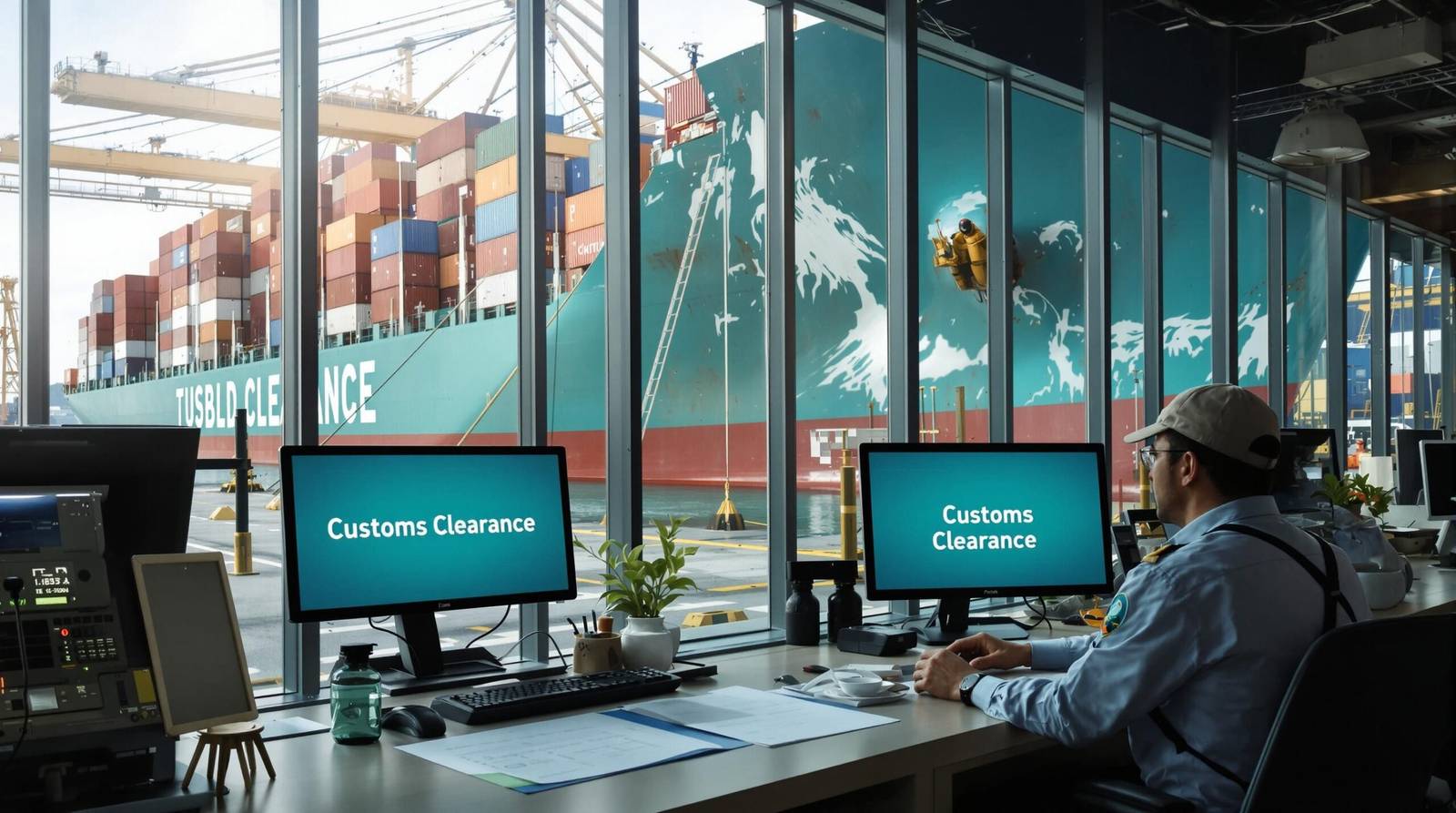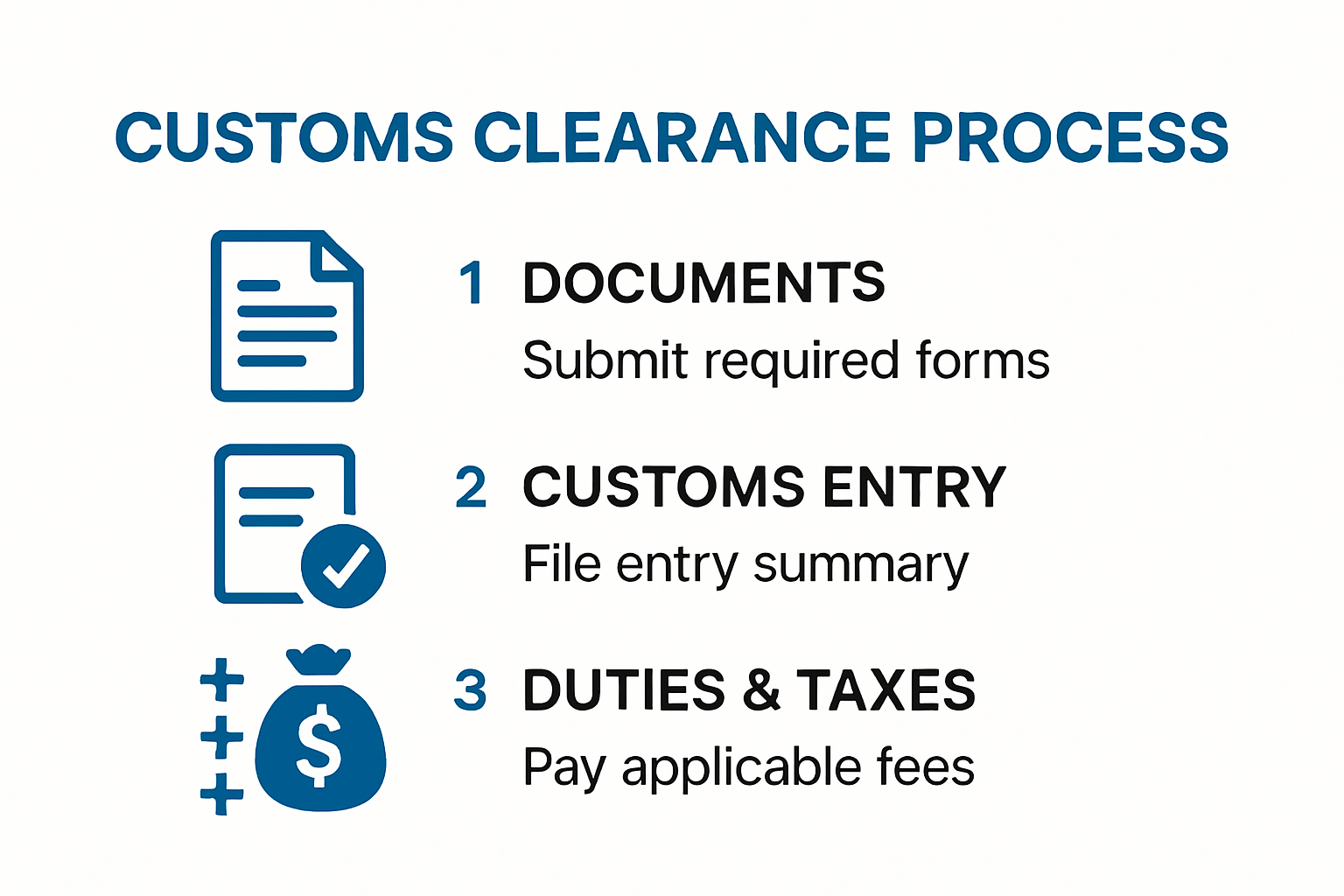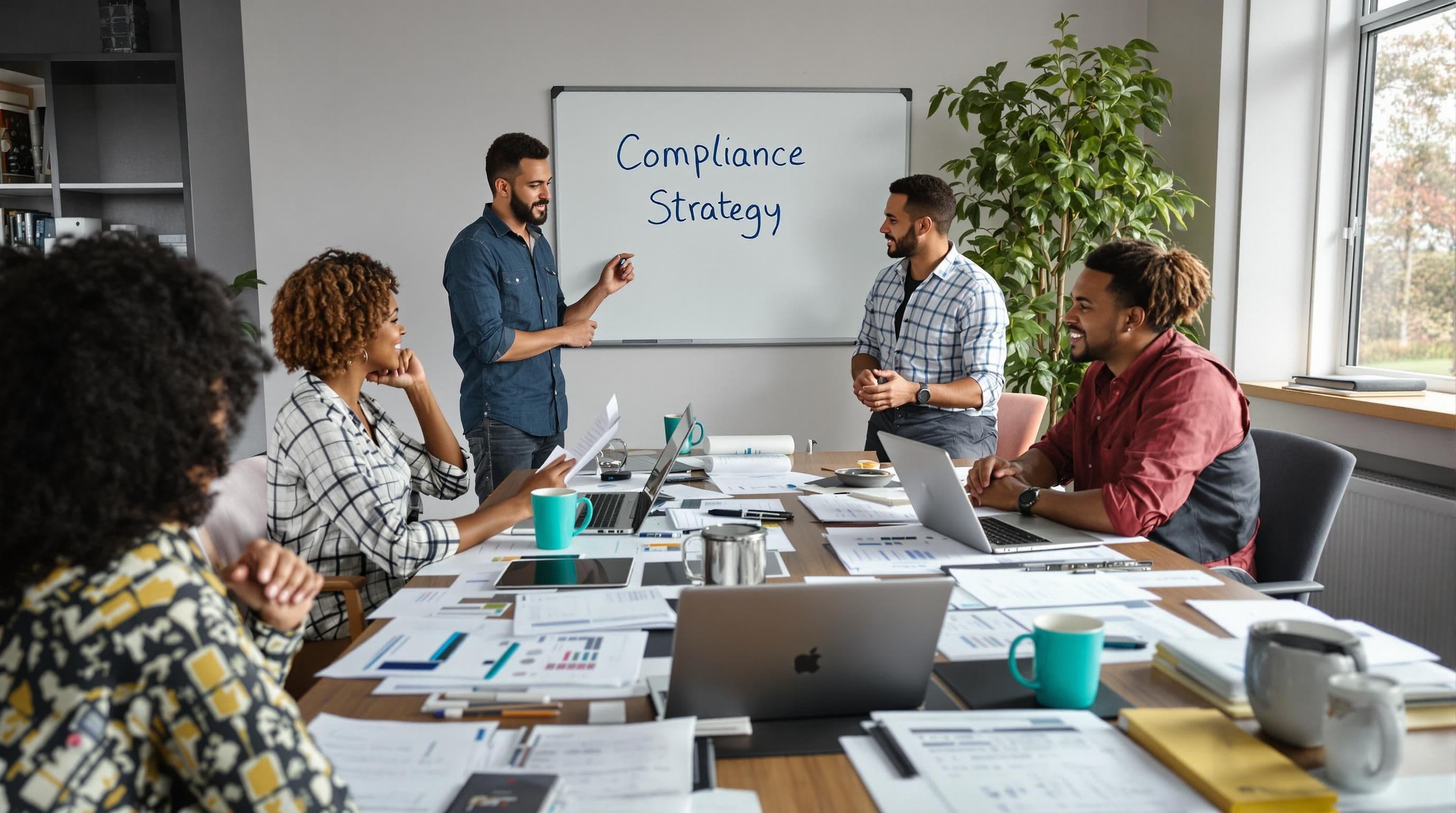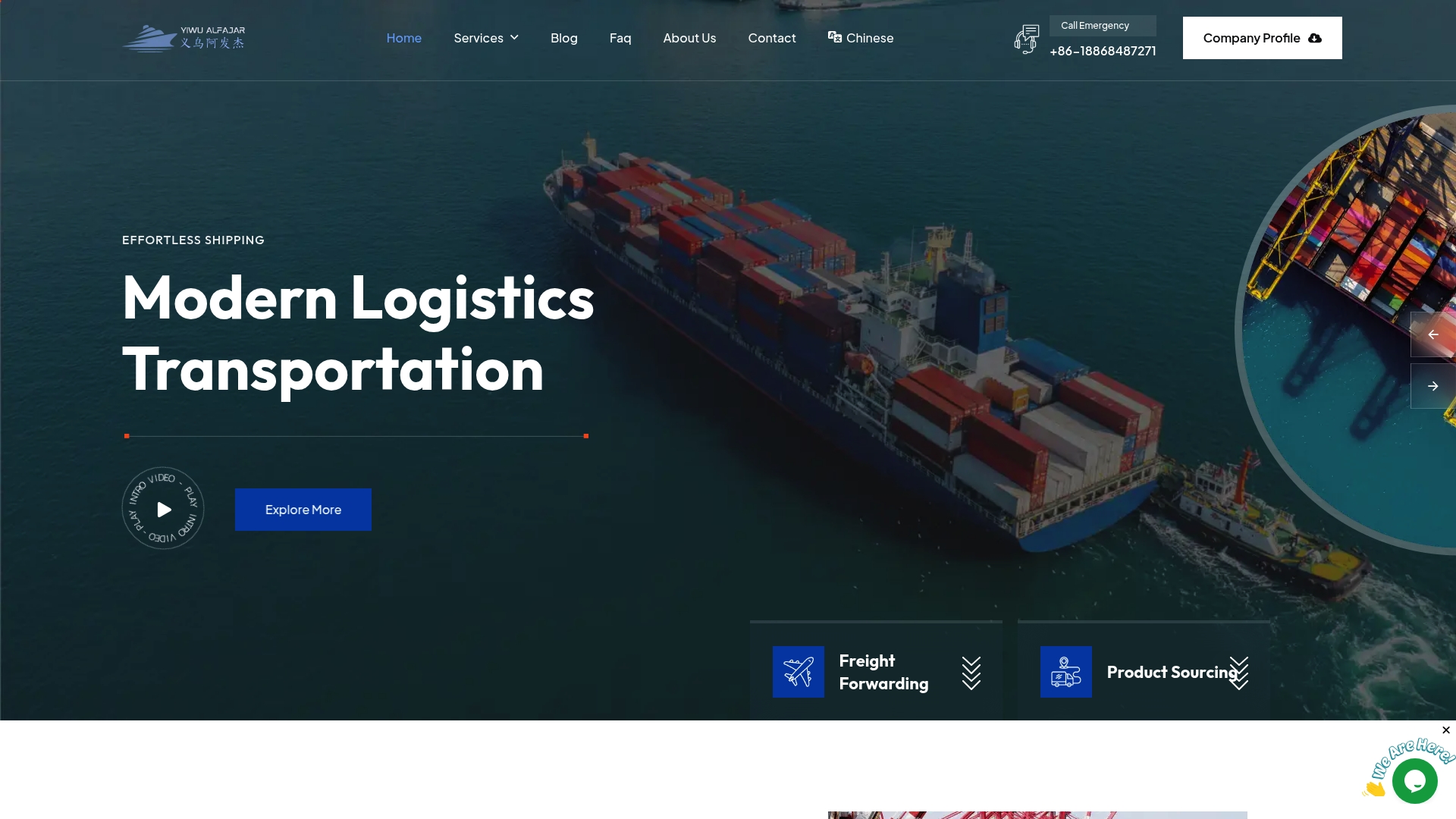
Every year, millions of shipments cross borders and face a crucial moment when customs officials decide their fate. You might think this step is just about paperwork and waiting in line. Not quite. Over 15 percent of international shipments are delayed or held back due to incomplete or inaccurate documentation. Surviving customs clearance is not only about getting a stamp of approval but about unlocking new growth and avoiding expensive setbacks that most businesses never see coming.
Table of Contents
- Understanding Import Customs Clearance Completed
- Common Challenges For Smes And E-Commerce
- Practical Steps After Clearance Is Completed
- Best Practices For Smooth Imports In 2025
Quick Summary
| Takeaway | Explanation |
|---|---|
| Ensure Accurate Documentation | Prepare comprehensive and precise documentation to avoid delays and compliance issues in customs clearance. |
| Plan Logistics Immediately Post-Clearance | Coordinate with logistics partners swiftly to minimize delays and additional costs in moving goods after clearance. |
| Review Financial Obligations Thoroughly | Conduct a detailed financial review post-clearance to identify discrepancies and ensure accurate duty payments. |
| Invest in Compliance Training Regularly | Continuous training for teams helps businesses stay updated on evolving regulations and reduces risks in import processes. |
| Adopt Technology for Efficiency | Utilize technological solutions to streamline documentation and monitor compliance, improving overall import efficiency. |
Understanding Import Customs Clearance Completed
Import customs clearance represents a critical checkpoint in international shipping where goods transition from a restricted status to an authorized entry. When a shipment receives the “customs clearance completed” status, it signifies a successful navigation through complex regulatory processes that determine whether merchandise can legally enter a country.
The Fundamental Meaning of Customs Clearance
Customs clearance is more than a bureaucratic stamp of approval. According to One World Direct, it indicates that goods have successfully passed all regulatory checks and are authorized for entry into the destination country. This process involves comprehensive evaluations that protect national security, ensure trade compliance, and verify the accurate declaration of imported goods.
The clearance process encompasses multiple critical verification steps. Customs officials meticulously review shipping documents, confirm product classifications, validate declared values, assess potential duties and taxes, and conduct necessary physical or digital inspections. Each examination serves a specific purpose in maintaining border control and international trade integrity.
Key Components of the Customs Clearance Process
Understanding the intricacies of customs clearance helps businesses anticipate potential challenges. IOR Africa clarifies that a completed customs clearance means your shipment has undergone thorough checks upon arrival, including document review, payment of required taxes or fees, and strict regulatory compliance.
The process typically involves several critical stages. First, importers must submit comprehensive documentation including commercial invoices, packing lists, certificates of origin, and import licenses. These documents provide customs officials with essential information about the shipment’s contents, value, and intended use. Next, authorities assess potential duties and taxes based on product classifications and declared values. Some goods might require additional specialized inspections depending on their nature or origin.
Customs Clearance Process Explained
Once all requirements are satisfied and payments are processed, customs will issue a formal clearance. This official authorization allows the shipment to move from a restricted customs area to its final destination. Businesses should recognize that customs clearance is not instantaneous and can vary significantly based on product complexity, country-specific regulations, and the completeness of submitted documentation.
Businesses engaged in international trade must approach customs clearance with meticulous preparation. Accurate documentation, understanding of relevant regulations, and proactive communication with customs authorities can significantly streamline the clearance process. Delays or complications often stem from incomplete or incorrect paperwork, making attention to detail paramount in successful international shipping endeavors.

Below is a table summarizing the key components and stages of the customs clearance process, making it easier to understand each step required for successful import clearance.
| Stage | Purpose | Example Documents/Actions |
|---|---|---|
| Document Submission | Provide shipment details and verify accuracy | Commercial invoice, packing list, import license |
| Product Classification | Determine correct category and applicable tariffs | Harmonized codes, product descriptions |
| Value Assessment | Confirm declared value for duties and taxes | Invoices, price lists |
| Duty/Tax Assessment | Calculate tariffs and taxes owed | Duty payment forms, calculation sheets |
| Physical/Document Inspection | Check compliance and authenticity | Customs inspection, digital evaluation |
| Formal Clearance Issuance | Officially authorize shipment entry | Clearance certificate, release form |
Common Challenges for SMEs and E-Commerce
Small and medium-sized enterprises (SMEs) and e-commerce businesses encounter increasingly complex obstacles in international trade, particularly during the import customs clearance process. These challenges extend far beyond simple administrative tasks and can significantly impact operational efficiency and financial performance.
Regulatory Complexity and Compliance Burdens
The international trade landscape presents formidable challenges for SMEs. According to the World Customs Organization, the surge in e-commerce has dramatically transformed customs administration, creating unprecedented complexities. E-commerce platforms now manage an exponential increase in low-value, small parcel shipments, which introduces substantial risk management and data quality challenges.
The Hinrich Foundation highlights that SMEs frequently struggle with intricate due diligence requirements. Conducting comprehensive checks on customers and suppliers becomes financially burdensome, particularly for businesses with limited resources. These compliance obligations demand sophisticated understanding of international regulations, creating significant barriers to global market participation.
Emerging Regulatory Reforms and Cost Implications
Recent regulatory developments further complicate the import landscape for SMEs. White & Case LLP reports that in January 2025, U.S. Customs and Border Protection proposed reforms targeting de minimis imports. These proposed changes include establishing a two-tiered entry system and implementing restrictions on certain imports, potentially increasing compliance costs and administrative complexity for small businesses.
The proposed reforms underscore the dynamic nature of international trade regulations. SMEs must remain agile, continuously updating their knowledge and adapting their processes to meet evolving requirements. This necessitates investments in ongoing training, technology, and potentially specialized consulting services to navigate the intricate customs clearance environment.
E-commerce businesses face additional challenges. The increasing volume of cross-border transactions means more scrutiny from customs authorities. Each shipment requires meticulous documentation, accurate product classification, and precise value declarations. A single error can result in significant delays, potential fines, or shipment rejections.
Moreover, the global nature of e-commerce means businesses must understand and comply with diverse international regulations. Different countries maintain unique customs requirements, tariff structures, and import restrictions. What works seamlessly in one market might trigger complications in another, demanding a nuanced, adaptable approach to international trade.
To successfully navigate these challenges, SMEs and e-commerce businesses must invest in robust compliance strategies. This includes leveraging technology for accurate documentation, maintaining transparent communication with customs authorities, and developing a comprehensive understanding of international trade regulations. Proactive preparation and continuous learning become essential survival skills in the complex world of global commerce.

Here’s a table comparing common challenges faced by SMEs and e-commerce businesses in the import customs clearance process, as highlighted in the previous section.
| Challenge | Impact on SMEs/E-Commerce | Required Response |
|---|---|---|
| Regulatory Complexity | High compliance burden, risk of errors | Continuous training, compliance systems |
| Due Diligence Costs | Financially burdensome for limited resources | Efficient compliance tools, consulting |
| Increasing Cross-Border Shipment Volume | More scrutiny, potential for delays/fines | Accurate documentation, scalable systems |
| Diverse International Regulations | Complicated multi-country compliance | Market-specific prep, expert consulting |
| Regulatory Changes (e.g., de minimis) | Increased costs, evolving requirements | Ongoing monitoring, agile adaptation |
Practical Steps After Clearance Is Completed
Once import customs clearance is completed, businesses must execute a series of strategic actions to ensure smooth logistics, maintain compliance, and optimize their supply chain operations. This phase represents a critical transition point where goods move from regulatory scrutiny to commercial deployment.
Immediate Verification and Documentation Management
Import documentation serves as the critical foundation for post-clearance processes. Businesses should immediately perform a comprehensive review of all customs clearance documents, including the final customs release form, import entry summary, and associated commercial invoices. Each document must be carefully authenticated and securely stored for potential future audits or regulatory reviews.
Companies should create digital and physical backups of all clearance documentation. These records are not merely administrative formalities but legal protections that can prove crucial in case of potential disputes, tax assessments, or compliance investigations. Systematic document management helps businesses maintain transparency and demonstrates operational diligence.
Logistics and Transportation Coordination
After customs clearance, the focus shifts to efficient goods transportation. Importers must coordinate with freight forwarders, trucking companies, or warehouse logistics teams to schedule immediate product movement. This stage requires precise communication and synchronized planning to minimize potential delays or additional storage costs.
Transportation planning should account for several critical factors:
- Immediate unloading schedules
- Warehouse or distribution center readiness
- Inventory management protocols
- Quality control inspection requirements
Businesses must also verify that the physical condition of goods matches the documentation. Any discrepancies discovered post-clearance could trigger potential re-inspection or additional customs scrutiny.
Financial and Compliance Follow-Up
Financial reconciliation represents the final critical step in the post-clearance process. Importers must carefully compare the actual duties and taxes paid against the initial estimates. Global Trade Compliance Experts recommend conducting a thorough financial review to identify any potential refund opportunities or additional obligations.
This phase involves several key financial activities:
- Reviewing and processing final customs duty payments
- Reconciling import-related expenses
- Updating internal financial records
- Preparing necessary tax documentation
Moreover, businesses should conduct an internal compliance audit to ensure all import regulations were correctly followed. This proactive approach helps identify potential improvements in future import processes and demonstrates a commitment to regulatory adherence.
Companies must recognize that customs clearance is not the end of the import journey but a critical transition point. Successful post-clearance management requires meticulous attention to detail, robust communication across multiple departments, and a strategic approach to logistics and financial management.
By implementing these systematic steps, businesses can transform the customs clearance completion from a potential administrative burden into an opportunity for operational optimization and strategic supply chain enhancement.
The following table outlines the recommended steps businesses should take immediately after customs clearance is completed to ensure compliance, smooth logistics, and financial accuracy.
| Step | Action Description | Purpose |
|---|---|---|
| Review Clearance Documents | Authenticate and store all key customs documents | Regulatory compliance, future audits |
| Create Digital/Physical Backups | Store copies in secure locations | Documentation security, legal protection |
| Coordinate Transportation | Schedule immediate goods movement with logistics | Minimize delays, avoid extra storage costs |
| Verify Product and Inventory Condition | Match physical goods to documented details | Detect discrepancies, maintain quality |
| Reconcile Duties, Taxes, and Expenses | Compare actual vs. estimated costs | Financial accuracy, refund opportunity |
| Update Internal Financial Records | Integrate import costs and duties into accounting | Accurate bookkeeping, tax preparation |
| Conduct Compliance Audit | Review adherence to regulations | Continuous improvement, reduce risk |
Best Practices for Smooth Imports in 2025
As international trade continues to evolve, businesses must adapt their import strategies to navigate increasingly complex regulatory landscapes. Successful imports in 2025 demand a proactive, strategic approach that combines technological innovation, meticulous planning, and comprehensive compliance management.
Documentation and Compliance Preparation
Inbound Logistics emphasizes the critical importance of accurate documentation in international shipping. Businesses must prepare a comprehensive document portfolio that goes beyond basic requirements. This includes creating precise commercial invoices, detailed packing lists, accurate bills of lading, comprehensive certificates of origin, and meticulously completed customs declarations.
Each document represents a crucial piece of the import puzzle. Consistency is key. Even minor discrepancies can trigger extensive reviews, potential penalties, and significant shipping delays. Companies should implement robust internal review processes that cross-reference documentation multiple times before submission. Digital document management systems can help streamline this process, reducing human error and providing an auditable trail of documentation.
Strategic Partnership and Technology Integration
According to Gaia Dynamics, collaborating with licensed customs brokers can dramatically simplify the import process. These professional intermediaries bring specialized knowledge of complex international regulations, ensuring accurate documentation and facilitating smooth communication with customs authorities.
Technology plays an increasingly pivotal role in modern import strategies. Advanced tracking systems, AI-powered compliance tools, and real-time data analytics enable businesses to:
- Monitor shipment status continuously
- Predict potential compliance challenges
- Automate complex documentation processes
- Maintain comprehensive audit trails
Businesses should invest in integrated technological solutions that can adapt to changing international trade regulations. This might include cloud-based logistics platforms, blockchain-enabled tracking systems, and machine learning tools that can anticipate potential customs complications.
Risk Management and Continuous Learning
Successful import strategies in 2025 require a dynamic approach to risk management. Companies must develop flexible frameworks that can quickly adapt to changing global trade regulations, geopolitical shifts, and emerging technological standards.
This involves:
- Regular compliance training for team members
- Continuous monitoring of international trade regulations
- Developing contingency plans for potential disruptions
- Maintaining relationships with multiple logistics partners
- Investing in ongoing technological and regulatory education
Effective risk management is not about eliminating all potential challenges but creating resilient systems that can quickly respond and adapt. Businesses that view compliance as a strategic opportunity rather than a bureaucratic burden will be best positioned to thrive in the complex global trade environment of 2025.
Importing goods successfully requires more than just moving products across borders. It demands a holistic approach that combines technological innovation, strategic partnerships, meticulous documentation, and a commitment to continuous learning and adaptation. By embracing these best practices, businesses can transform potential import challenges into competitive advantages.
Frequently Asked Questions
What does “import customs clearance completed” mean?
Import customs clearance completed indicates that your shipment has successfully passed all regulatory checks and is authorized for entry into the destination country.
What are the key components of the customs clearance process?
The customs clearance process typically involves document submission, product classification, value assessment, duty/tax assessment, inspection, and issuance of formal clearance.
What should I do immediately after customs clearance is completed?
After customs clearance is completed, verify all documentation, coordinate transportation, and reconcile financial obligations to ensure smooth logistics and compliance.
What common challenges do SMEs face during the customs clearance process?
SMEs often face regulatory complexity, compliance burdens, and increasing costs, especially with the rise of e-commerce and diverse international regulations.
Overcome Post-Clearance Challenges With Reliable Expertise
Completing import customs clearance is just one step on the long road to smooth international shipping. Many businesses, especially small and mid-sized importers, struggle with what comes next: proper documentation, seamless logistics coordination, and ensuring financial compliance. The risks of missed deadlines, unexpected storage fees, or compliance errors are real and costly. You need a partner with deep experience in handling these critical post-clearance steps and one who understands the pressure of getting your goods delivered safely and on time.

Now is the best time to take control of your global shipments. Rely on the supply chain experts at Al Fajar Shipping for complete end-to-end support. From freight consolidation, customs declaration, and sourcing to fast warehousing and shipment tracking, we help simplify your entire process. Visit https://alfajarshipping.com today to get a tailored quote and start building a shipping plan that makes your business faster and more reliable. Let us remove the guesswork and help your imports flow smoothly every step of the way.

